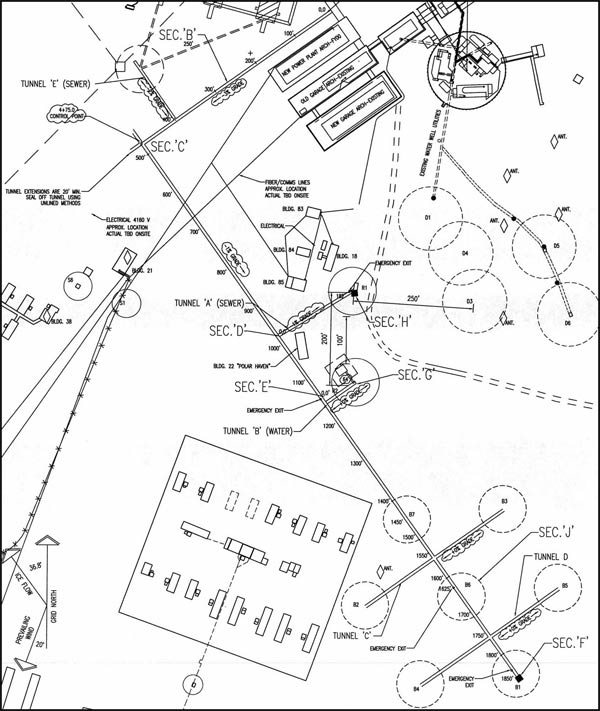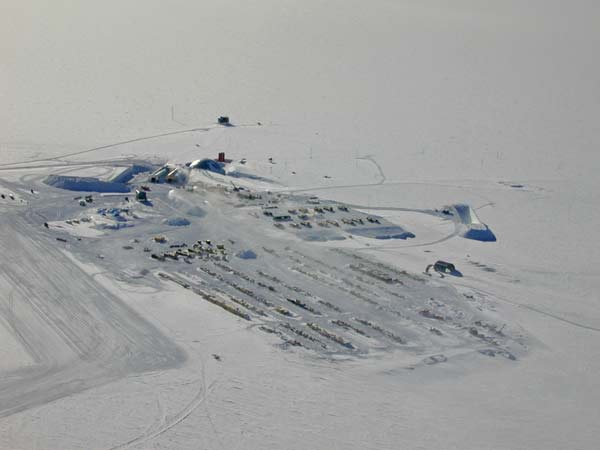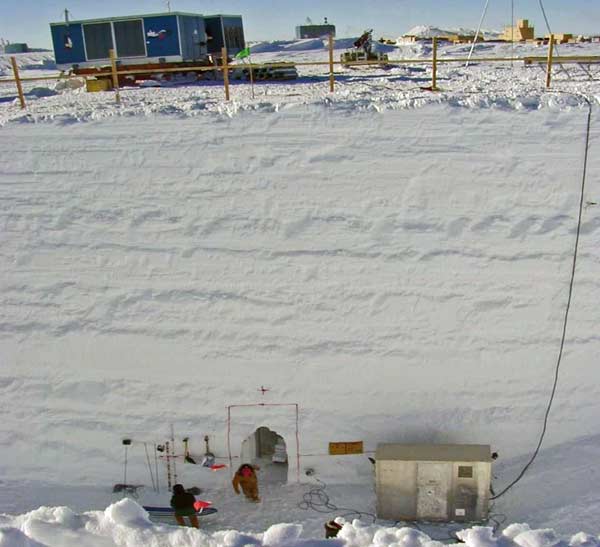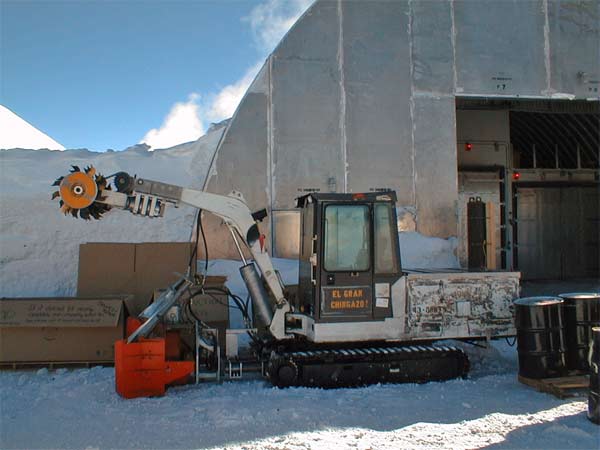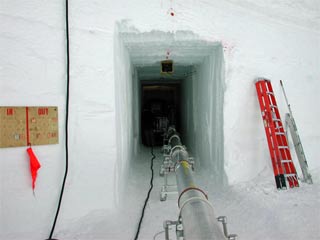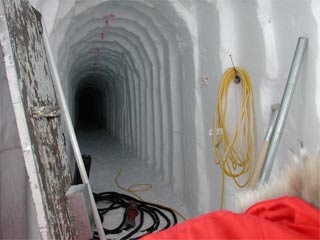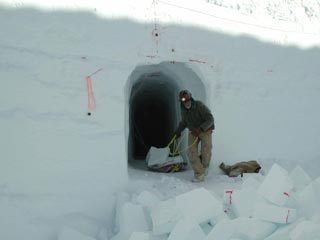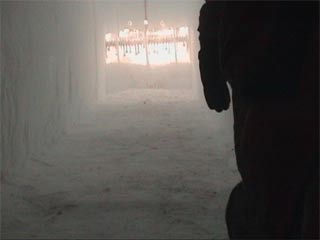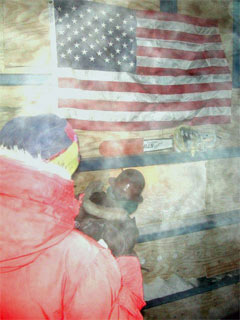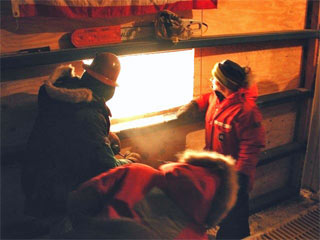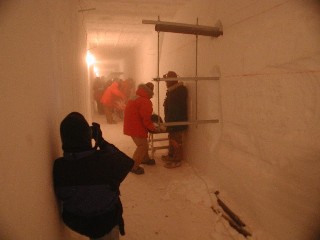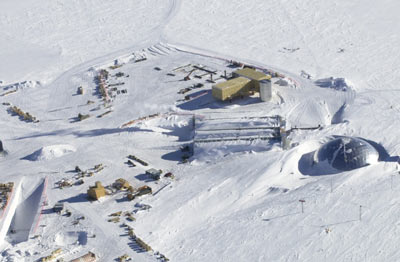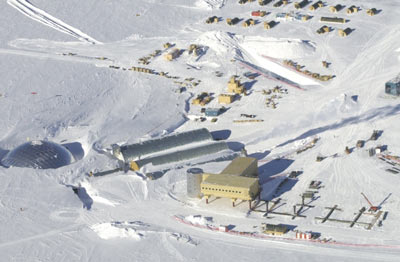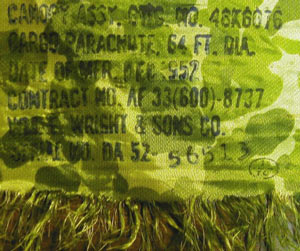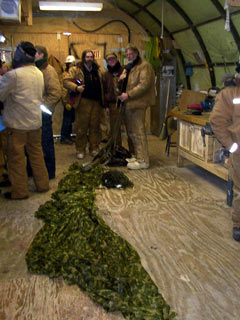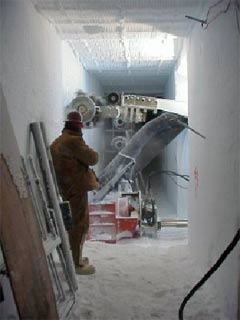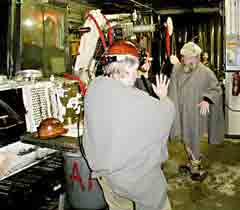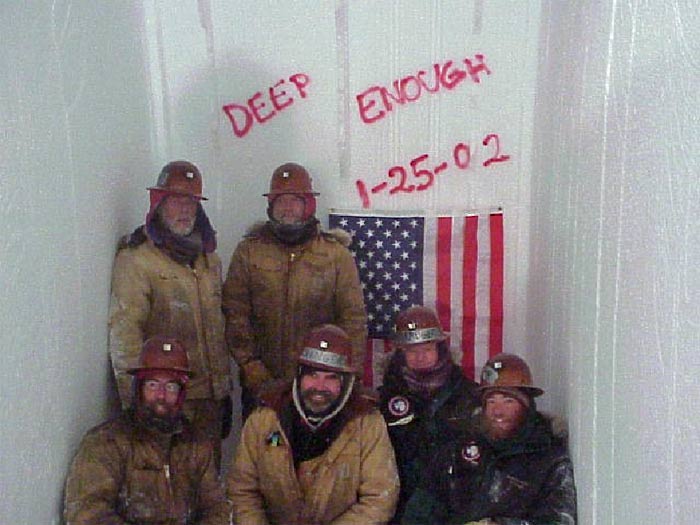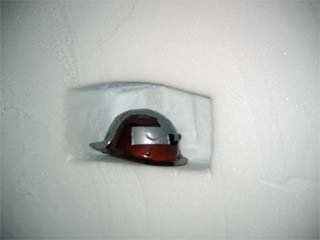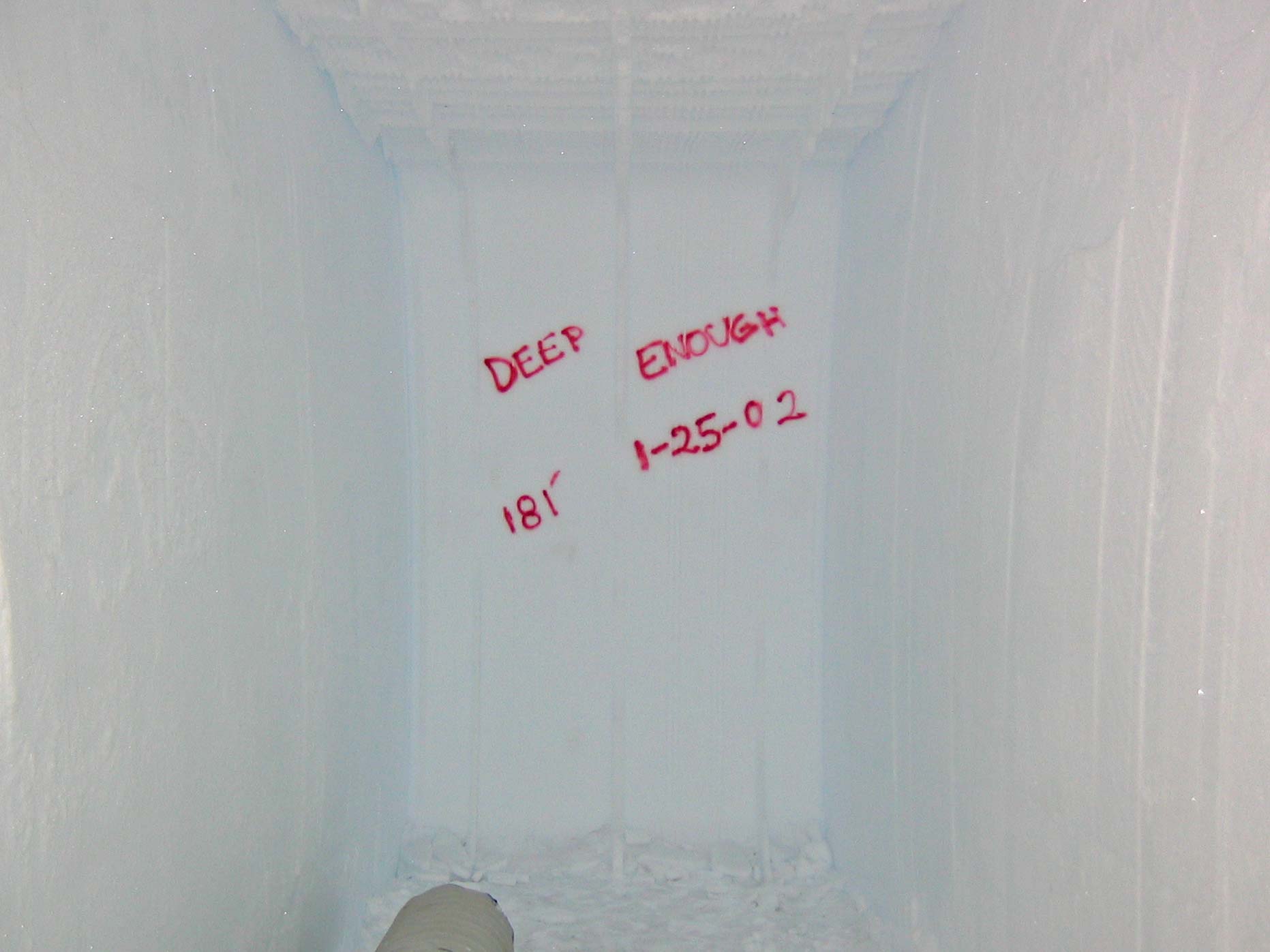|
The main production effort for what are known as the new station "ice tunnels" took place over 3 summers, from 1999-2000 to 2001-02. (Previously, the tunneling machine had been developed and tested at Pole over several seasons beginning in 1995-96...eventually resulting in a proof-of-concept gravity sewer tunnel for the domed station--this effort is described here, with more photos and information about the equipment.) What was needed was to create about 1900 feet of main tunnel (L-shaped in the above drawing) as well as the cross tunnels to connect to present and future water wells and sewer bulbs. The plan is that when the rodwell gets too deep, a new one is created, and the old one is filled up with sewage. The tunnels are laid out to provide for many well locations into the second half of this century. Since the drill rig was a unique prototype, the progress over all 3 seasons reads like a maintenance mechanic's nightmare. Every week or two, something would give out--pumps, hoses, motors, blowers, connectors, controllers...the details are in the CRREL 2003 report (see references below). Anyway, the 1999-2000 summer plan was to complete the entire long leg of the "L" (see above diagram) starting from the southeast end, furthest from the station. The above aerial photo from early in the 1999-2000 season shows the deep access trench for the tunnel at right (as well as the excavation for the new power plant arch in the upper left corner) (CW). Above, the south entrance to the tunnel, at the bottom of that deep trench (CW). To the right of the entrance is one of the accessory modules for the tunneling machine. In this photo, career miner Ray Medina is hauling a banana sled of excavated snow from the tunnel, which had not yet been excavated out to its full dimensions (red lines) with the tunneling machine. This is roughly at the location of the new "Rodwell 3" building constructed in 2006-07...as well as the new rodwell itself, which was put into service in January 2013. | |
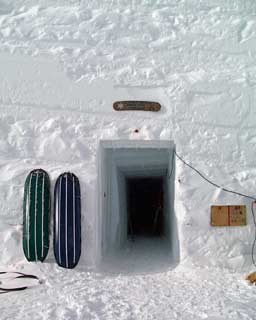 Here's a closer view of the tunnel entry on 7 December 1999, after the machine has done its work and squared out the tunnel to its full dimensions. The sign over the entrance..."la cueva cristal" (the crystal cave) (JL). |
|
|
Things went fairly well for awhile, until yet another failure in the hydraulic motor driving the cutting drum blades shut things down for the season after 894' had been dug. It is interesting to note that the temps in the new station tunnels were much closer to the SP ambient temperatures of around -60°F--for some reason about 20° colder than the temps experienced in the previous 96-97 tunnel. Perhaps due to the warming influence of the sewer bulbs?? After repairs, the tunneling team regrouped in the 2000-01 season to (hopefully) finish things off. To prepare, a massive ditch, 35' deep, 30' wide and 200' long was excavated at the corner of the "L" of the tunnel route (see above drawing), and hand digging commenced on 1 December. 228' was dug using hand mucking methods before the tunneling machine parts arrived--this consisted of 4' x 7' pilot bores--38' of access trenches to the corner, 142' from the corner northeast towards the crossroads (intersection with the new station arch between the power plant and the vertical tower) and 48' southeast from the corner towards the tunnel that had been dug the previous summer. Finally the machine was repaired, and it began work on 15 December. | |
| Completion of the 475 feet between the corner and the crossroads was not without further breakdown and difficulty--this time replacement parts for the drum hydraulic pump shaft and coupling had to be hand carried from CONUS--but the repairs got made and tunneling resumed. Finally at 0805 on Friday 2 February, RPSC foreman John Wright radioed to his tunnel crew "Deep enough" which signified that the crew had holed through once again right on the money. Below, two foggy photos of folks watching from their hut (GM): | |
|
This marked the end of the work ON the tunnels for the 2000-01 season, but the winterover carpenter crew went to work installing the water and sewer piping inside the tunnel, as seen below (DB) (more information and photos). | |
|
In 2001-02 the tunneling crew returned in mid-November for the last time--the task for this season was the various side tunnels to the present and future well locations. First, another massive entrance access trench was dug, as can be seen in the above early-season USAP aerial photos. At left is a photo (from Scott Smith) of the label. A bit later when it was safely possible, the rest of the parachute was fully dug out and recovered by John Wright and the tunneling crew (right). I even acquired a piece of it (my souvenir piece), and other souvenir pieces with commemorative letters were sent to the IGY-era Polies.
Unfortunately the evil spirits were not fully appeased, because John Penney was was working on a D-6 shortly after the exorcism when a punch he was using shattered, slicing a tendon in his finger. But work continued--the machine was moved next to the southernmost cross tunnel "D," which was completed right after New Years Day. Attention then turned to "tunnel E," the emergency sewer tunnel from the elevated station, which was hand dug with chain saws. The last cross tunnel, "C," was started the week of 19 January and completed on the 25th when the cry "deep enough" was heard for the last time (below, JM). Footnotes...the tunneling machine and equipment was packed up and (I believe) eventually shipped back to CONUS. The tunnel utility work continued...and the new rodwell was placed in service on 13 February 2002 using the piping systems in the tunnel. And among the items left behind in the tunnel...is foreman John Wright's hardhat (BS). First...several CRREL (U. S. Army Cold Regions Research and Engineering Laboratory) papers were a source of much of the technical information as well as graphics and photos. There is also extensive discussion on the performance of the tunneling machine and its many operational problems and breakdowns. Links to the papers are to the CRREL web site. Arcone, Steven A.; Tobiasson, Wayne; and Delaney, Allan J. Ground-Penetrating Radar Investigation of the Proposed CARA Tunnel Route and Utilities at South Pole Station, Antarctica. CRREL Report 95-24, December 1995 (CRREL 1995A). Vaughan, Thomas. "South Pole Tunneling System." CRREL graphic prepared October 1996. Walsh, Michael R. The CRREL South Pole Tunneling System. CRREL Report 99-1, January 1999 (CRREL 1999A). Delaney, Allan J; Arcone, Steven A.; and Rand, John H. Radar Investigations of Proposed Utilidor Sites at South Pole Station. CRREL Special Report 99-10, August 1999 (CRREL 1999B). Walsh, Michael. Design and Operational Issues While Tunneling in Firn at the South Pole Station. CRREL Technical Report 03-17, September 2003 (CRREL 2003). Photos are thanks to Dave Benson (DB), Kevin Culin (KC), Chris Groppi (CG), Dana Hrubes (DH), Katy Jensen (KJ), Josh Landis (USAP Antarctic Photo Library), (JL), Lee Mattis (LM), Jerry Macala (GM), Jerry Marty (JM), Chris Rock (CR), Bill Spindler (BS), and Carlton Walker (CW). The line drawings are excerpted from the project design drawings. Also referenced was the 9 December 2001 Antarctic Sun "Around the Continent" article by Judy Spanberger, which was also the publication source of the exorcism photo seen here. Additional historical information was obtained from the station situation reports (SITREPS). Below, the final endpoint of the tunneling project as seen in 2008 (BS): | |
